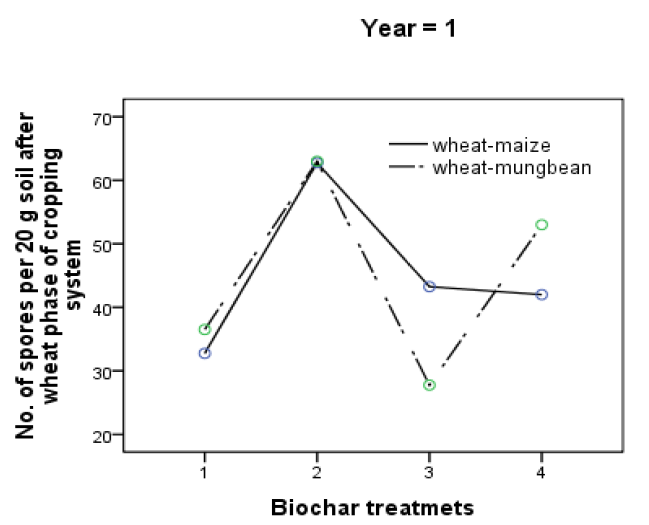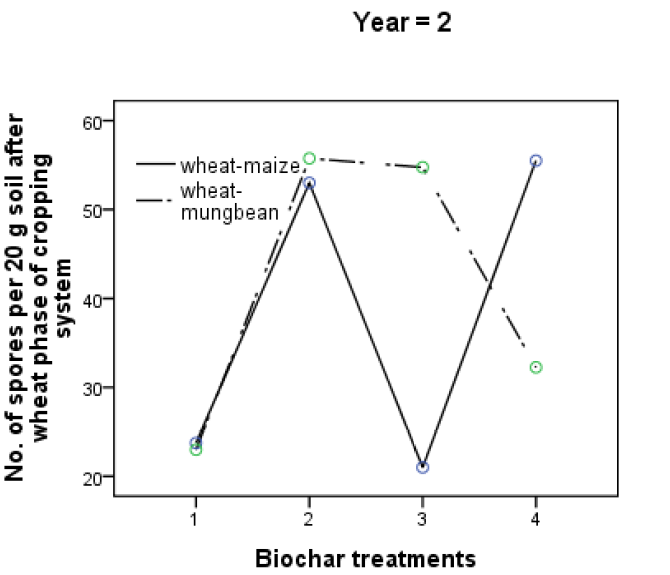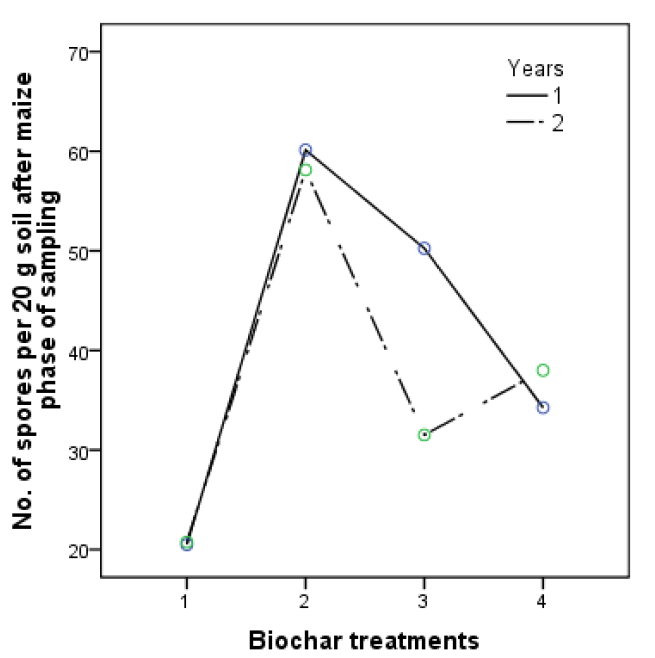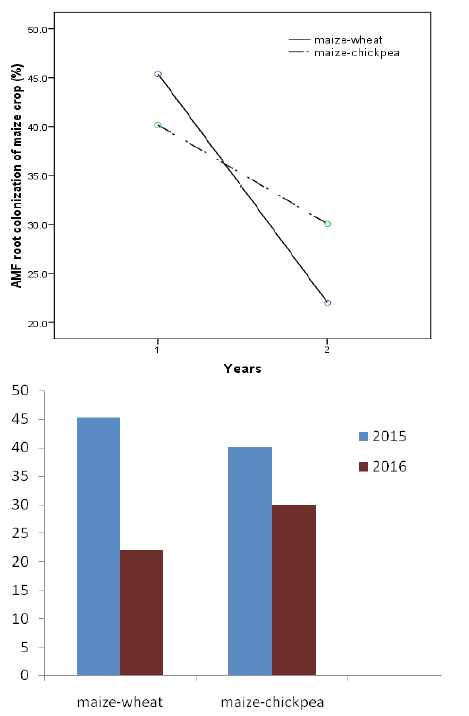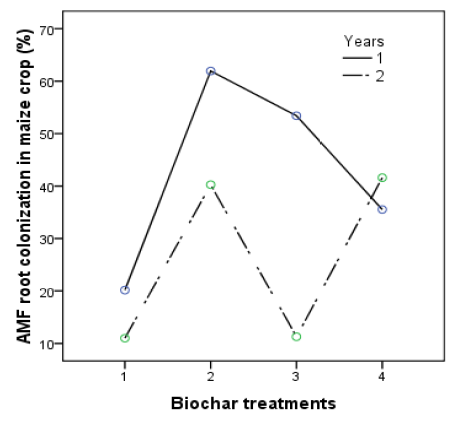Biochar Improves Viability of Arbuscular Mycorrhizal Fungi (Amf) in Soil and Roots of Wheat (Triticum aestivum) and Maize (Zea mays L.) under Various Cropping Systems
Biochar Improves Viability of Arbuscular Mycorrhizal Fungi (Amf) in Soil and Roots of Wheat (Triticum aestivum) and Maize (Zea mays L.) under Various Cropping Systems
Zubaria Malik, Zahir Shah* and Muhammad Tariq
Interactive effect of cropping systems and biochar levels on spore density in soil after wheat harvest in year 1 (2015/16). Biochar treatment 1 is control receiving no biochar in any season, 2 is receiving biochar at 20 t ha-1 each in summer and winter, 3 is receiving biochar at 40 t ha-1 in winter season and 4 is receiving biochar at 40 t ha-1 in summer season.
Interactive effect of cropping systems and biochar levels on spore density after wheat harvest in year 2 (2016/17). Biochar treatment 1 is control receiving no biochar in any season, 2 is receiving biochar at 20 t ha-1 each in summer and winter, 3 is receiving biochar at 40 t ha-1 in winter season and 4 is receiving biochar at 40 t ha-1 in summer season.
Interactive effect of biochar levels and years on AMF spores in soil after harvest of maize crop in year 1 (2015) and 2 (2016). Biochar treatment 1 is control receiving no biochar in any season, 2 is receiving biochar at 20 t ha-1 each in summer and winter, 3 is receiving biochar at 40 t ha-1 in winter season and 4 is receiving biochar at 40 t ha-1 in summer season.
Interactive effect of cropping system and years on AMF root colonization (%) of maize crop.
Interactive effect of biochar levels and years on AMF root colonization (%) of maize crop. Biochar treatment 1 is control receiving no biochar in any season, 2 is receiving biochar at 20 t ha-1 each in summer and winter, 3 is receiving biochar at 40 t ha-1 in winter season and 4 is receiving biochar at 40 t ha-1 in summer season.





